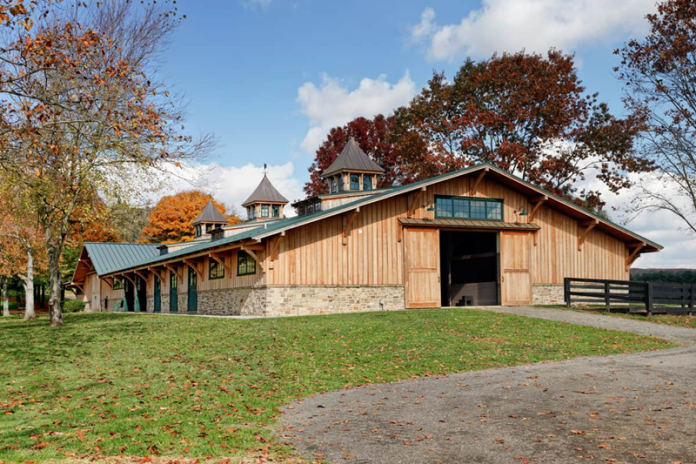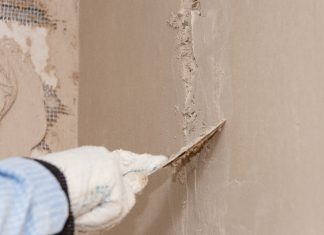Owning a barn is a huge responsibility, especially if you want it to last through all kinds of weather. Whether you’re storing equipment, housing animals, or keeping it for other purposes, regular maintenance is the best way to avoid big problems later. Let’s face it—barns take a beating from the elements year-round, so having a seasonal maintenance routine is essential. But where do you start? Don’t worry; I’ve got you covered with this simple checklist that’ll help you keep your barn in tip-top shape, no matter the season.
Start with the Roof
Your barn’s roof is your first line of defense against the weather, and it can take a lot of punishment, especially during winter and spring, so it should definitely feature on your to-do list if you’re to stay on top of weekly and seasonal maintenance. Neglecting it could mean expensive repairs down the line, so it’s smart to keep an eye on it regularly.
For each season, inspect the roof for loose or missing shingles, tiles, or metal sheets. Look out for any signs of sagging or dips that could indicate structural damage. Water stains on the ceiling inside the barn can signal leaks, so it’s important to address those immediately. And don’t forget to clear any debris like leaves, branches, or snow that might have built up on the roof.
Winter Tip:
Heavy snow can weigh down the roof, so if you live in a snowy area, be sure to clear it off periodically to prevent excess strain.
Check the Barn Doors
Barn doors get a lot of use, and the constant opening and closing, plus exposure to the elements, can wear them down over time. Check for signs of rot, warping, or rust on the hinges and hardware. Lubricate any moving parts like hinges or sliding door tracks to keep everything operating smoothly.
Wooden doors can absorb moisture during rainy or humid months, which may cause them to swell. Make sure the doors are properly sealed and that any gaps are caulked to prevent drafts or water from getting in.
Inspect the Foundation
Your barn’s foundation is another critical element that can’t be ignored. Over time, weather changes can cause cracks or shifts in the foundation, leading to bigger structural issues if left unchecked. Every season, walk around the barn and look for cracks or gaps in the foundation. Even small cracks can grow if they aren’t fixed promptly.
During wet seasons like spring, ensure that water is draining away from the foundation. Poor drainage can lead to water pooling around the base of your barn, which can weaken the foundation over time.
Gutters and Downspouts
Gutters are often overlooked, but they play a huge role in keeping your barn dry and safe. Make it a habit to clean out the gutters at the start of each season, especially after fall when leaves can clog them up. Clogged gutters can cause water to overflow and damage the roof or foundation, so this small task can save you a lot of trouble later on.
Make sure the downspouts are directing water well away from the barn’s foundation. If water is pooling near the base, consider extending the downspouts or installing drainage solutions to help.
Check for Pests
Let’s be honest—barns are magnets for critters, especially during the colder months. While a few animals might seem harmless, they can cause real damage if left unchecked. Look for signs of nesting, droppings, or gnaw marks, particularly in storage areas or around electrical wiring.
Consider installing pest control measures like traps or barriers to keep animals from making your barn their home. Regular inspections will help you catch any issues before they become infestations.
Pest Control Tips:
- Seal entry points – Check for gaps around windows, doors, and vents.
- Clear debris – Don’t leave food or organic material that might attract pests.
- Install screens – Screens on windows and vents can help keep pests out.
Electrical Systems
If your barn has electricity, this is one area you can’t afford to ignore. Faulty wiring can lead to serious safety hazards, including fires. Every season, inspect all electrical components, from lights and outlets to the wiring itself. Look for frayed wires, scorch marks, or any signs of wear that might indicate a problem.
If you’re not confident handling electrical work, don’t hesitate to call in a professional. It’s always better to be safe than sorry when dealing with electricity.
Look Over the Windows and Ventilation
Good ventilation is key to maintaining a healthy environment inside your barn, especially if you’re housing animals. Windows and vents should be checked for cracks, broken glass, or issues with the seals. If the windows are designed to open, make sure they still operate smoothly and are free of rust or debris that could hinder them.
Seasonal Check:
- Summer: Ensure ventilation is optimized to prevent heat buildup.
- Winter: Check for drafts around windows and doors to maintain warmth inside.
Paint and Exterior Maintenance
The outside of your barn isn’t just for show—it’s there to protect the structure from the elements. Every season, inspect the paint or siding for peeling, cracking, or signs of rot. If you notice any bare wood, it’s time to repaint or reseal it to prevent moisture from getting in.
Wooden barns, in particular, benefit from regular sealing or staining to protect them from moisture and insects. Metal barns should also be checked for rust and treated if needed.
Seasonal To-Do List
To make things easier, here’s a seasonal breakdown of what you should focus on:
- Spring – Clean out gutters, check foundation, look for water damage.
- Summer – Inspect windows and ventilation, clean out pests, touch up paint.
- Fall – Clear out gutters, inspect roof, seal doors and windows for winter.
- Winter – Check for snow buildup on the roof, remove ice from gutters, ensure doors and windows are draft-free.
Final Thoughts
Keeping your barn in good condition doesn’t have to be overwhelming. By breaking down the maintenance into seasonal tasks, you’ll be able to stay on top of it without much hassle. Stick to this checklist, and you’ll save yourself from costly repairs and ensure your barn stays safe and functional year-round!














